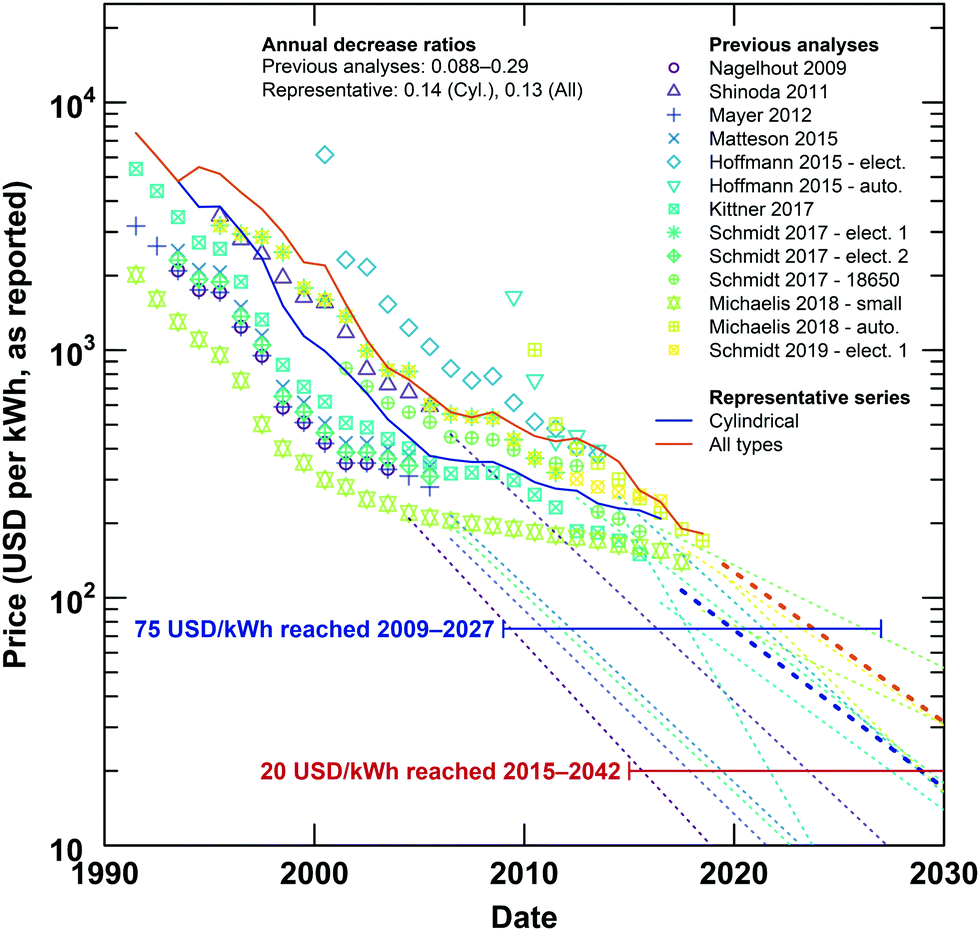A good review of lithium-ion battery cost reductions
“Re-examining rates of lithium-ion battery technology improvement and cost decline” – by Ziegler & Trancik
Open source article : https://pubs.rsc.org/en/content/articlelanding/2021/ee/d0ee02681f
It is clear that in the past few decades, lithium-ion batteries have improved in terms of various metrics – energy density, specific energy, power density, etc. while costs have also reduced significantly.
This publication by Micah Ziegler and Jessika Trancik from MIT explores the correlation of the decline in price with improved technology (Moore’s Law), cumulative production (Wright’s Law), annual production (Goddard’s Law) and R&D activity as measured via patent filings.

Check out the monthly newsletter covering the latest on sustainable transportation technologies and regulations. Sign up if you like such content.
Like it ? Share it !
Other recent posts
Conference Summary – SAE WCX 2025
![]()
A summary of the “SAE WCX 2025” conference held in Detroit.
IRENA Renewable Energy Capacity Statistics 2025
![]()
According to the latest report from IRENA, 2024 saw the largest increase in renewable capacity, accounting for 92.5% of overall power additions.
CO2 Emissions Performance of Heavy-Duty Vehicles in Europe – 2022 Results
![]()
The European Commission has published the official 2022 CO2 emission results for heavy-duty vehicles. Many OEMs are ahead of the targets and have gained credits, while others have their work cut out as we approach the 2025 target.

